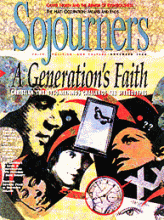A tense, cautious hope for a peaceful future in Northern Ireland emerged with the cease-fire called on August 31 by the Irish Republican Army, ending its 25-year armed campaign against the British presence in Northern Ireland. It is an abrupt shift of tune in an ancient conflict over land, religion, culture, political power, repression, colonial manipulation, economic scarcity, and even names of places.
Majority Protestants, most descended from Scots brought in by the British in the 1600s to displace the Irish, look warily to the 98-percent Catholic Republic of Ireland in the south. Catholics in Northern Ireland fear the majority Protestants, pointing to a long history of officially condoned mass starvation, military repression, and cultural prejudice that continues with contemporary politicians, police, and employers.
Economic scarcity and anxieties about the political future raise the stakes: Cultural identities are clenched so tightly by both sides that the defining edges of the conflict blur and shift, forming the motions and movements of war.
This has been the dance of young British and Royal Irish Regiment soldiers on the street: twisting and turning their machine gun partners, always moving in sets of fours. They bend low on one knee and swivel outward. Pairs move forward, two glance back, all four advance—a war dance down Falls Road (Catholic, Nationalist, Repub-lican), down the Shankill (Protestant, Loyalist, Unionist), through the check points of the city center.
Read the Full Article
